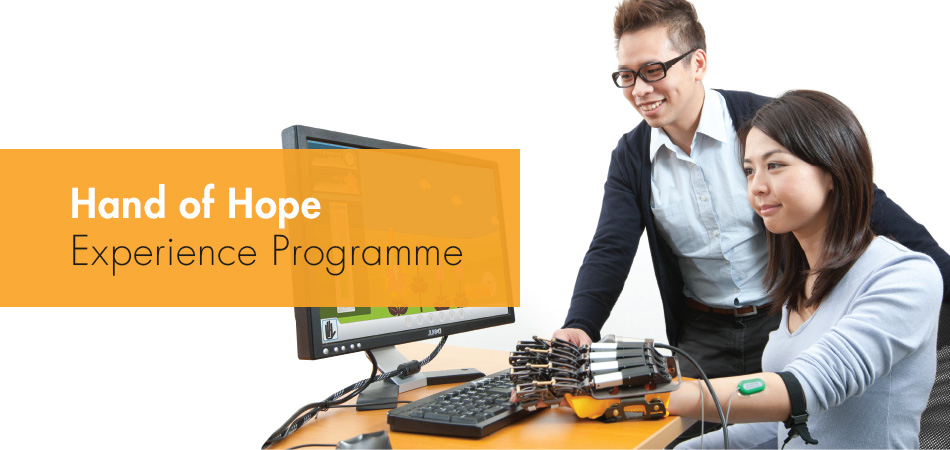How hand of hope can help you in stroke rehabilitation?
Stroke rehabilitation is quite demanding during recovery, but Hand of Hope, a highly developed state of the art rehabilitation device uses the theory of neuroscience to re-establish movement to a paralyzed hand. The robotic hand restores movement to the hand in stroke patients by encouraging them to use their own muscle signals to learn to use the affected hand once again. It is a portable and wearable apparatus that uses superior technology to help patients begin moving their damaged muscles independently as well as control their movements. Hand of Hope was precisely developed to assist coordination, muscle relaxation, and overall motor control for people afflicted by stroke.
The hand brace must be worn on the upper surface of the damaged hand with two surface sensors fastened to the flexor and extensor arm muscles to sense the sEMG or surface electromyographic signals for active involvement during work out. The sEMG signals enable the patient to picturize muscle movement according to the signals sent by the sEMG electrodes.
During training, patients wear the robotic hand on their impaired hand and have two EMG sensors attached to the extensor and flexor muscles. Electromyography (EMG) is a technique used to spot the electrical capability produced by muscle cells during activity. In a medical backdrop, the procedure is used to evaluate the biomechanics of movement and to detect neuromuscular disorders.
Stroke rehabilitation normally necessitates rhythmic movements that aid the brain to reconnect neurological corridors and restore motor function. Hand of Hope makes it possible for the patient to relearn the desired motor movements. The robotic hand supervises the affected muscles but doesn't push them to move. The patient himself starts the movement through EMG signals. This technique manages the data and forwards it to a motor on the robotic hand to help begin movement. The whole procedure happens in the twinkling of an eye. Due to the regular exercises using the Hand of Hope, the stroke patients can perform normal daily actions like opening, holding, picking, etc.
Hand of Hope has been created for people suffering a stroke to enable motor control, muscle relaxation, and coordination. The total arrangement comes with a variety of interactive games intended for training development. The games are fashioned in such a manner as to help with precise activities like grasping, arm training, and hand opening. The complexity of the games increases at every level and the advanced levels necessitate patients to move their arm according to the game.
What is Hand of Hope?
The Hand of Hope (HOH) therapy device used for neuromuscular rehabilitation of the hand and forearm that may help patients regain hand mobility through motor relearning. The HOH functions as a biofeedback device where surface electromyography (sEMG) sensors utilising a patient's own muscle signals to activate their desire to move their hand. These signals are processed and simplified and can be seen through visual feedback that requires the patient to be actively engaged throughout a therapy session.
Therefore with the impairment of a stroke or a brain injury the functional limitation and impaired intentional movement can be presented and utilised as a visual process. The patient’s attention is drawn to a visually displayed EMG signal and consequently it can be used to initiate the task of movement. This biofeedback shown to the patient helps to promote motor learning via interactive use.
A stroke is one of the leading causes of adult disability and hand rehabilitation after a stroke is a very challenging part of a patients recovery thereafter. However, it is well known that sensory signals such as visual sensory inputs reach the those parts of the brain that modulate function and excitability, and therefore this can improve a patient's motor learning abilities.
Since active participation and the initiation of movement is the key to success, using the biofeedback system the HOH helps to motivate patients to interact with the system during the EMG controlled task-related training regime.
The system can be applied to patients starting from age 8-9 years old.
Download Brochure
|
Hand of Hope Experience Programme
|



